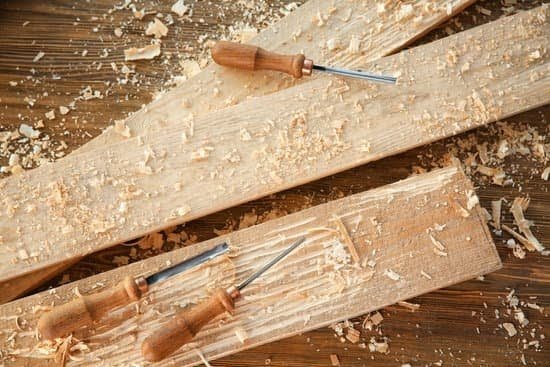What are the essential machine and woodworking skills that every woodworker should possess? In today’s DIY and professional woodworking industries, having a solid foundation of machine and woodworking skills is crucial for creating quality projects and ensuring safety in the workshop. Whether you’re a hobbyist or a professional woodworker, understanding the different machines, tools, safety precautions, and techniques is essential for success in this craft.
Woodworking involves a wide range of machines and tools, including table saws, band saws, planers, jointers, and more. Understanding how to operate these machines safely and effectively is fundamental to mastering woodworking skills. Additionally, knowing basic and advanced woodworking techniques such as measuring, cutting, shaping, joining, finishing wood, wood carving, wood turning, and precision joinery are necessary for creating high-quality projects.
Moreover, understanding the properties of wood itself is key to successful woodworking. Different types of wood have unique characteristics that affect how they can be worked with. It’s important for woodworkers to understand these properties to choose the right materials for their projects and work with them effectively. In this article, we will explore the importance of these skills and provide valuable insights into mastering them for both DIY enthusiasts and professionals in the industry.
Understanding Different Types of Woodworking Machines
Woodworking machines are essential tools for both DIY enthusiasts and professional woodworkers. Each type of machine has its specific purpose and function, making it crucial to understand the various options available. In this section, we will take a closer look at some of the most common woodworking machines and tools, including table saws, band saws, planers, jointers, and more.
Table Saws
Table saws are one of the most versatile and widely used woodworking machines. They are designed for making straight cuts in wood and are essential for tasks like ripping boards, cross-cutting, and mitering. It is important to learn how to safely operate a table saw and make accurate adjustments for different cutting tasks.
Band Saws
Band saws are ideal for making curved or irregular cuts in wood. They feature a continuous blade stretched between two wheels and offer greater flexibility compared to other cutting tools. Learning how to set up the band saw correctly and adjust the tension of the blade is crucial for achieving precise cuts.
Planers and Jointers
Planers are used to create smooth and even surfaces on wooden boards, while jointers are used to flatten one face of a board and straighten one edge. These machines are essential for preparing wood before joining them together. Understanding how to use these tools effectively can greatly improve the quality of woodworking projects.
Other Essential Machines
In addition to the above-mentioned machines, there are also other essential woodworking tools such as routers, sanders, drills, lathes, and more. Each machine plays a unique role in shaping and finishing woodwork projects.
Understanding how each woodworking machine operates is vital for anyone looking to excel in woodworking. It’s also important to learn how to maintain these machines properly for long-lasting use. Mastering these essential machine skills will greatly enhance your ability to bring your woodworking visions to life.
Safety Precautions and Practices
When working with woodworking machinery, safety should always be the top priority. Understanding and following the necessary safety precautions and best practices can prevent accidents and injuries. Here are some essential safety measures to keep in mind when operating woodworking machines:
- Wear appropriate safety gear: Always wear protective gear such as goggles, ear defenders, dust masks, and gloves to protect yourself from potential hazards.
- Read the user manual: Before using any woodworking machine, thoroughly read the user manual to understand its operation, safety features, and maintenance requirements.
- Keep work area clean and well-lit: A clutter-free and well-lit workspace reduces the risk of accidents. Make sure there are no obstructions around the machinery.
In addition to these precautions, it’s important to practice safe handling of woodworking tools:
- Use sharp blades: Dull blades can cause kickback or snagging. Always ensure that your saw blades, planer knives, and other cutting tools are sharp and properly maintained.
- Secure workpieces: When cutting or shaping wood on a machine, securely clamp down the workpiece to prevent it from shifting unexpectedly during operation.
- Avoid loose clothing and jewelry: Loose clothing or accessories can get caught in moving parts of machinery. Wear fitted clothing without hanging ties or jewelry.
By adhering to these safety practices, woodworkers can minimize the risk of accidents and create a safe working environment for themselves and others.
Woodworking is an incredibly satisfying skill that requires mastery of various techniques. While it’s rewarding to see a piece of furniture come together through careful crafting – making one wrong move could lead not only to wasted materials but also injury. For those looking into joining this craft – make sure you’re prioritizing your personal health alongside perfecting your craft.
Basic Woodworking Techniques
When it comes to woodworking, having a strong foundation in basic woodworking techniques is essential for any woodworker, whether they are a beginner or an experienced professional. Understanding how to measure accurately, make precise cuts, shape wood according to the project requirements, join pieces effectively, and finish the wood properly are all essential skills that form the backbone of successful woodworking projects.
These fundamental skills not only ensure the safety of the woodworker but also contribute to the overall quality and durability of the finished workpiece.
Measuring accurately is one of the most critical skills in woodworking. Whether it’s taking dimensions for a project or marking out specific cuts and joints, precision is key.
Utilizing tools such as tape measures, squares, and rulers correctly is crucial in ensuring that each measurement is precise and error-free. Additionally, understanding how to make different types of cuts – straight cuts with saws or curved cuts with jigsaws or band saws – is vital in achieving the desired shapes and sizes for each woodworking component.
Moreover, learning how to effectively join wooden pieces together through techniques like gluing, screwing, nailing, or using traditional joinery methods like dovetail joints or mortise and tenon joints is another indispensable skill. The strength and stability of a woodworking project heavily rely on properly joining its components.
Lastly, mastering various finishing techniques such as sanding, staining, sealing can elevate the overall aesthetic appeal of a piece while also providing protection against wear and tear over time. In conclusion,
Advanced Woodworking Techniques
Woodworking is not just about cutting and assembling wood; it also involves more complex skills that require a higher level of expertise and precision. For individuals looking to take their woodworking abilities to the next level, mastering advanced techniques like wood carving, wood turning, and precision joinery is essential. Below are some key advanced woodworking techniques that every aspiring woodworker should consider learning:
- Wood Carving: Wood carving is the art of shaping wood using cutting tools such as chisels, gouges, and knives. It involves intricate detailing and creating three-dimensional designs on wood surfaces. Mastering this skill allows woodworkers to add decorative elements to their projects or create standalone pieces of art.
- Wood Turning: Wood turning involves spinning a piece of wood on a lathe while shaping it with various cutting tools. This technique allows craftsmen to create rounded shapes like bowls, spindles, and decorative legs for furniture. It requires a combination of fine control and understanding of different turning tools.
- Precision Joinery: Precision joinery refers to the art of joining two or more pieces of wood together with tight-fitting joints that are both strong and visually appealing. Techniques like dovetail joints, mortise and tenon joints, and finger joints require meticulous attention to detail and accuracy in measurements for a perfect fit.
In order to excel in these advanced woodworking techniques, individuals must have a solid foundation in basic woodworking skills including accurate measuring, precise cutting, shaping, and joining methods. Furthermore, acquiring an understanding of various wood properties is crucial when working on advanced projects as different woods may behave differently when subjected to carving or turning techniques.
Overall, mastering advanced woodworking skills not only enhances one’s craftsmanship but also opens up new creative possibilities for unique woodworking projects. Whether pursuing woodworking as a hobby or profession, investing time in learning these complex techniques can lead to truly remarkable creations that showcase the artisan’s skill and creativity.
Understanding Wood Properties
Wood properties play a critical role in the woodworking process, influencing everything from the choice of tools and techniques to the final outcome of a project. Understanding these properties is essential for woodworkers looking to create high-quality, durable pieces that showcase the natural beauty of wood.
One crucial property to consider is the grain pattern, which affects how the wood moves as it expands and contracts with changes in humidity. This knowledge helps woodworkers anticipate potential warping or splitting and select appropriate joinery methods to accommodate movement.
Another important characteristic is the hardness of the wood, which impacts how easily it can be shaped and worked with different tools. For example, softer woods like pine are more easily gouged by sharp cutting edges, while harder woods like oak require more effort to shape but can hold finer details.
Additionally, understanding the moisture content of wood is vital for preventing defects like shrinkage or distortion in finished pieces. Different types of wood also have unique coloring and grain patterns, which can influence design choices and finishing techniques.
Ultimately, having a firm grasp of various wood properties enables woodworkers to make informed decisions about material selection, tool usage, design considerations, and finishing methods. It empowers them to enhance their craftsmanship by leveraging each type of wood’s distinct characteristics to achieve their desired aesthetic and functional goals. With this knowledge in hand, woodworkers can elevate their projects from mere creations to works of art that stand the test of time.
Maintenance and Care of Machinery
Woodworking machines are essential tools for anyone in the woodworking industry, whether for hobby or profession. Keeping these machines in top working condition is crucial to ensure safety, optimal performance, and longevity. Proper maintenance and care not only extend the life of the equipment but also contribute to the quality of work produced. So, what are the essential machine and woodworking skills required to maintain and care for woodworking machinery effectively?
One of the most critical skills needed for maintaining woodworking machines is a thorough understanding of each tool and its components. This includes being familiar with how each machine operates, its specific maintenance requirements, and any adjustments that may need to be made over time. Additionally, having the ability to troubleshoot common issues that arise with different woodworking machines is essential.
Another indispensable skill for machinery maintenance is regular cleaning and lubrication. Woodworking machines accumulate sawdust, debris, and other particles during use, which can affect their performance if not properly cleaned. Knowing how to disassemble specific parts of a machine for thorough cleaning and applying appropriate lubricants is vital for keeping it in optimal working condition.
Moreover, having proficiency in identifying signs of wear and tear on woodworking machines is crucial for timely repairs. Being able to spot worn-out parts or components that need replacement can prevent further damage to the equipment and ensure its continued functionality. This also involves knowing when it’s necessary to seek professional maintenance or repair services.
| Skills Needed for Machinery Maintenance | Description |
|---|---|
| Understanding Each Machine | Familiarity with the operation, maintenance needs, and troubleshooting of different woodworking machines. |
| Cleaning and Lubrication | Ability to thoroughly clean machines and apply appropriate lubricants at regular intervals. |
| Identifying Signs of Wear and Tear | Proficiency in recognizing worn-out parts or components that require attention or replacement. |
Developing Design and Creative Skills
Understanding Aesthetics and Functional Design
One of the essential machine and woodworking skills is understanding aesthetics and functional design. This involves learning how to create pieces that are not only visually appealing but also serve their intended purpose effectively. This skill requires an understanding of proportions, balance, and ergonomics, as well as consideration for practical features when designing furniture or other wooden items.
Exploring Intricate Designs
Mastering intricate designs is another crucial aspect of developing woodworking skills. This involves creating detailed patterns, latticework, or ornate carvings on wood surfaces. It requires precision, patience, and attention to detail. From delicate filigree in scrollwork to complex inlays and marquetry, intricate designs can elevate your woodworking projects to works of art.
Custom Woodworking Projects
Finally, custom woodworking projects allow woodworkers to fully express their creativity and individuality. By taking on custom commissions or creating unique pieces for personal use, woodworkers can showcase their skills while fulfilling specific design requirements. Custom projects often involve collaboration with clients or partners to bring a unique vision to life through woodworking.
Conclusion
Woodworking is a skill that requires a good understanding of the different types of woodworking machines and tools, as well as the proper techniques for working with wood. What are the essential machine and woodworking skills that individuals need to master in order to excel in this craft? Whether you are a hobbyist or a professional in the industry, having a solid foundation of woodworking skills is crucial for creating quality projects and ensuring safety in the workshop.
One essential machine and woodworking skill is understanding the various types of woodworking machines and tools. This includes knowledge of table saws, band saws, planers, jointers, and more. Each of these machines serves a specific purpose in the woodworking process, and knowing how to operate them safely and effectively is fundamental.
Another important skill is practicing safety precautions and best practices when working with woodworking machinery. This includes using personal protective equipment, maintaining a clean workspace, securing workpieces properly, and being aware of potential hazards. Safety should always be a top priority when operating any type of machinery in the workshop.
Additionally, mastering basic and advanced woodworking techniques is crucial for creating high-quality projects. These techniques involve measuring accurately, cutting precisely, shaping intricately, joining pieces together seamlessly, and finishing wood beautifully. Advanced skills such as wood carving, wood turning, and precision joinery also contribute to elevating the quality of woodworking craftsmanship.
| Woodworking Skills | Description |
|---|---|
| Understanding Woodworking Machines | Knowledge of various types of machines such as table saws, band saws, planers |
| Safety Precautions | Practicing safety measures when operating machinery to prevent accidents |
| Basic & Advanced Techniques | Skills including measuring accurately, cutting precisely, shaping intricately |
Resources and Further Learning
In conclusion, the essential machine and woodworking skills discussed in this article play a vital role in the DIY and professional woodworking industries. From understanding different types of woodworking machines to mastering safety precautions, basic and advanced techniques, and wood properties, these skills are crucial for anyone involved in woodworking. Moreover, the maintenance and care of machinery and the development of design and creative skills are also indispensable for achieving success in this field.
For those looking to further develop their machine and woodworking skills, there are numerous resources and references available. Whether it’s books, online tutorials, workshops, or joining a community of fellow woodworkers, there are plenty of avenues to continue learning and honing one’s abilities in this craft. Additionally, seeking guidance from experienced professionals can provide valuable insights and mentorship that can greatly contribute to skill improvement.
Ultimately, consistently practicing and refining these essential machine and woodworking skills will not only enhance the quality of work produced but also increase efficiency and safety in the workshop. Aspiring woodworkers as well as seasoned professionals should continuously seek opportunities for further learning and skill development to stay abreast of new techniques and technologies in the ever-evolving industry.
Frequently Asked Questions
What Skills Are Required for Woodworking?
The skills required for woodworking include the ability to accurately measure and cut wood, understand different types of wood and their uses, proficiency in using hand and power tools, knowledge of joinery techniques, and the ability to interpret woodworking plans and blueprints. Attention to detail, patience, and a good eye for aesthetics are also important skills for a woodworker.
What Are the Fundamentals of Woodworking?
The fundamentals of woodworking include understanding wood grain and how it affects cutting and shaping wood, learning basic woodworking joints such as butt joints, miter joints, dovetail joints, etc., mastering safe and proper use of hand tools like chisels and planes, as well as power tools like table saws and routers.
Additionally, understanding how to properly sand, stain, and finish wood is crucial to achieving high-quality woodworking projects.
What Is an Essential Tool for a Woodworker?
An essential tool for a woodworker is the chisel. This versatile hand tool allows woodworkers to precisely carve, shape, and create joinery in their woodworking projects.
Chisels come in various sizes and shapes to accommodate different woodworking tasks, from fine detail work to heavier chopping duties. A sharp set of chisels is indispensable for any woodworker looking to produce professional-grade pieces.

Hi everyone! I’m a woodworker and blogger, and this is my woodworking blog. In my blog, I share tips and tricks for woodworkers of all skill levels, as well as project ideas that you can try yourself.





